How Many Different Types of Iphones Have There Been Invented
Apple's iPhone has been dominating the world for over ten years now, but can you guess how many iPhones have been released since 2007?
The answer is 33 – to date, as in up to November 2020, Apple has released 33 iPhones since 2007. Crazy, right? We've got all the iPhones in the order they came out below.
iPhone launches and release dates have moved around quite a bit over the years, but during the last half-decade, Apple has settled into something of a rhythm with its iPhone releases. They usually launch inside Q3 and then get a release date during early Q4 – this has been the case since around 2012.
Usually, this means we start seeing solid iPhone leaks during the first half of the year. As the year progresses, and the new iPhone launch gets closer, the leaks become more frequent and revealing. Usually, by the time the new iPhone launches, we know nearly all of its new specs and features.
As you can see below from the iPhone release date history list, Apple tends to favor September/November when it comes to release dates. And the reason for this is simple: it is right before the busiest shopping season of the year – the run-up to Christmas.
iPhones In Order of Release Date – From 2007 To 2021
- iPhone Release Date – June 29, 2007
- iPhone 3G Release Date – June 9, 2008
- iPhone 3Gs Release Date – June 19, 2009
- iPhone 4 Release Date – 24 June 2010
- iPhone 4s Release Date – 14 October 2011
- iPhone 5 Release Date – 21 September 2012
- iPhone 5s Release Date – 20 September 2013
- iPhone 5c Release Date – 20 September 2013
- iPhone 6 & iPhone 6 Plus Release Date – 25 September 2014
- iPhone 6s & 6s Plus Release Date – 25 September 2015
- iPhone SE Release Date – March 31, 2016
- iPhone 7 & 7 Plus Release Date – 25 September 2016
- iPhone 8 & 8 Plus Release Date – 22 September 2017
- iPhone X Release Date – 3 November 2017
- iPhone XR Release Date – 26 October 2018
- iPhone XS Release Date – 21 September 2018
- iPhone XS Max Release Date – 21 September 2018
- iPhone 11 Release Date – 20 September 2019
- iPhone 11 Pro Release Date – 20 September 2019
- iPhone 11 Pro Max Release Date – 20 September 2019
- iPhone SE (2020) Release Date – April 24, 2020
- iPhone 12 Release Date – October 23, 2020
- iPhone 12 Mini Release Date – November 13, 2020
- iPhone 12 Pro Release Date – November 13, 2020
- iPhone 12 Pro Max Release Date – November 13, 2020
- iPhone 13 Release Date – September 24, 2021
- iPhone 13 Mini Release Date –September 24, 2021
- iPhone 13 Pro Release Date – September 24, 2021
- iPhone 13 Pro Max Release Date – September 24, 2021
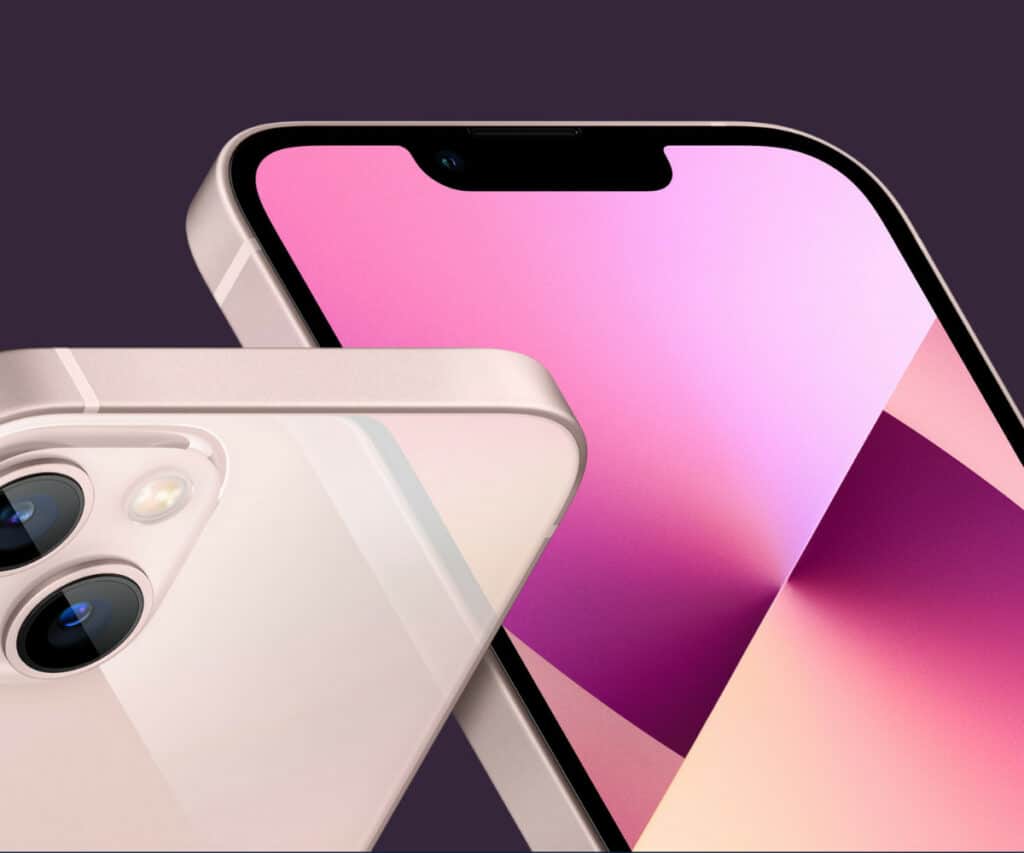
iPhone 13 Resource Hub: All The Latest News, Updates, Pricing & Guides
Mapping Out The Different "iPhone Eras"
As you can see, that's quite a lot of iPhones. Inside the last 12 years, Apple has redesigned, reimagined, and completely overhauled the iPhone, moving from a tiny, plastic device (iPhone 3G) with less memory than a $2 USB stick to increasingly larger, more potent phones that, in 2020, would give most laptops a run for their money, with respect to performance and processing power.
The iPhone, over the years, has moved through several "eras" – we had the 3.5in era, for example, then the 4in era and, more recently, the 5+ inch era with its latest releases, currently the iPhone 12 range (but these will soon be replaced by the iPhone 13, of which there will be four distinct models).
Here's how to update to iOS 14 on your iPhone right now!
First Came The Home Button, Then TouchID And, Finally… FACE ID
Similarly, Apple's iPhone has experienced some major changes to how users interact with the phone itself. Initially, we had the home button. The standard home button remained in place from the release of the iPhone 3G and hung around until the release of the iPhone 5s, which brought TouchID, Apple's fingerprint reader, into the mix.
TouchID stuck around for a while too; here are all the iPhones that feature TouchID:
- iPhone 5s
- iPhone 6
- iPhone 6 plus
- iPhone 6s
- iPhone 6s plus
- iPhone 7
- iPhone 7 Plus
- iPhone 8
- iPhone 8 Plus
The iPhone X – or iPhone 10 – saw Apple do away with TouchID in favor of FACE ID, a new biometric technology that allowed users to unlock and securely access their iPhone using their face. From here on out, FACE ID became Apple's defacto method for unlocking and accessing iPhones. Until 2020, then TouchID made a return inside the iPhone SE 2020, an iPhone 8 redux with Apple's phenomenal A13 CPU inside it. The iPhone SE 2020 is also the cheapest iPhone Apple has ever released – you can pick one up for $399.99 (or £419 if you're in the UK).
All iPhone Models Released To Date (Oldest To Newest)
iPhone
The original iPhone dropped in 2007. It was the first mobile device ever released by Apple and, at the time, was heavily criticized by the press. The handset was a small, often referred to as the iPhone 2G because it did not support 3G and instead ran on quad-band GSM with GPRS and EDGE. The iPhone cost $499 for the entry-level model and, following Steve Jobs's announcement, thousands of people queued-up outside Apple Stores to buy one.
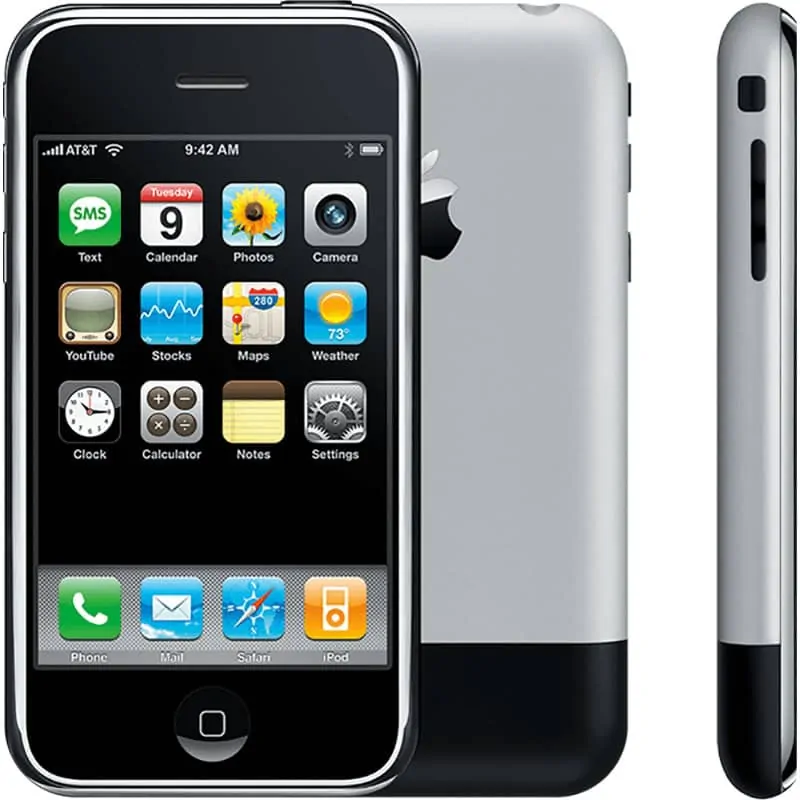
While something of a prototype for future iPhones, the iPhone 2G was largely responsible for changing the publics' opinion on what a cellphone should look like. The iPhone brought a fully-functional touchscreen, did not have any keyboard, and, was running a then completely new operating system, iPhone OS, which would later become iOS.
- Dimensions: 115 x 61 x 11.6 mm
- Screen Size: 3.5 inches, 320 x 480 pixels
- CPU: 412 MHz ARM 11
- Battery: Non-removable Li-Ion battery
iPhone 3G
The iPhone 3G was the successor of the iPhone; it added in many missing things, but the crucial improvement was its ability to access 3G mobile data (notably tri-band UMTS/HSDPA). Apple didn't touch the design of the handset, the iPhone 3G ran much the same software as it predecessor, and the internal spec, save for the connectivity stuff, was left much the same too.
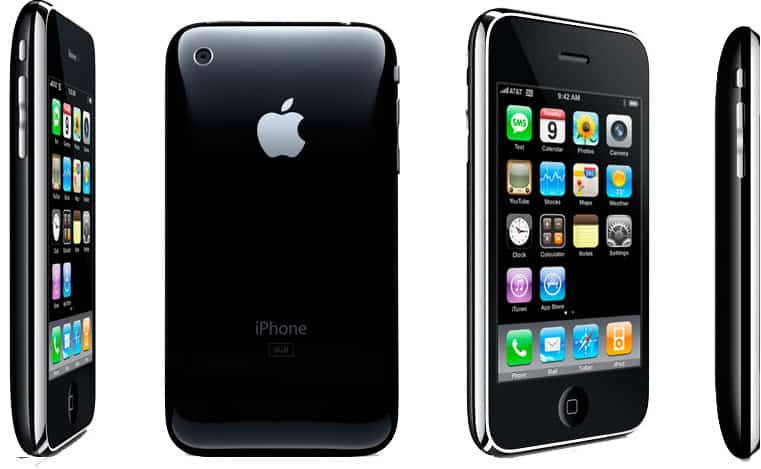
The iPhone 3G was Apple's first phone to run on "fast" mobile data. Reviewers described the phone as an improved version of its predecessor, but many still lamented the cost – the iPhone 3G was considerably more expensive than its peers. But this was all part of Apple's plan; it knew high prices would make it an "event", something to coveted by people, lusted after.
- Dimensions: 115.5 x 62.1 x 12.3 mm
- Screen Size: 3.5 inches, 320 x 480 pixels
- CPU: 412 MHz ARM 11
- Battery: Non-removable Li-Ion battery
iPhone 3Gs
The iPhone 3Gs, again, was very similar in terms of design to both the iPhone 3G and the iPhone 3G. The big difference with this phone, however, was speed – Apple bumped both the CPU and the phone's memory to make it faster. It worked too; the iPhone 3Gs was one of the best selling phones of its era, pulling in millions of new users to Apple's ecosystem.
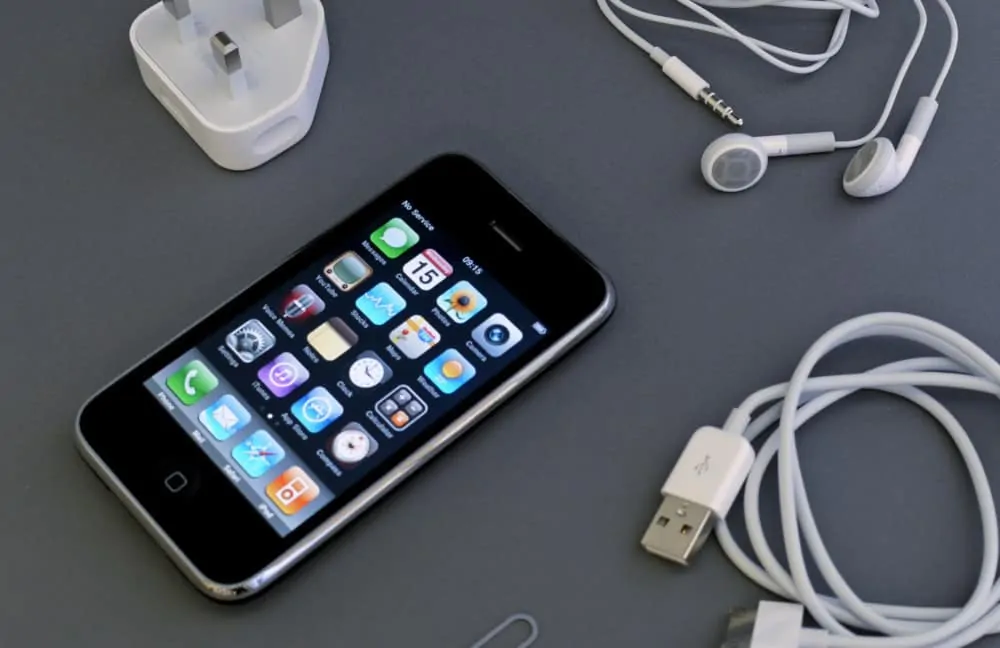
Apple also updated the cameras on the iPhone 3Gs too, adding in support for video recording, as well as upping the megapixels on the main camera. Combined, these changes scored Apple a lot of new friends. The press liked the phone and so too did the punters; Apple's iPhone 3Gs sold very well and hung around for a couple of years before being discontinued in 2012.
- Dimensions: 115.5 x 62.1 x 12.3 mm
- Screen Size: 3.5 inches, 320 x 480 pixels
- CPU: 600 MHz Cortex-A8
- Battery: Non-removable Li-Ion battery
iPhone 4
The iPhone 4 represented a massive step forwards for Apple. It was the first time the company completely overhauled the design of the iPhone, and people loved it. I remember when it first came out; it looked truly stunning, with its classy styling and premium materials. Apple also massively improved the specs and hardware too, giving the impression that this was the phone it'd been working towards since 2007.
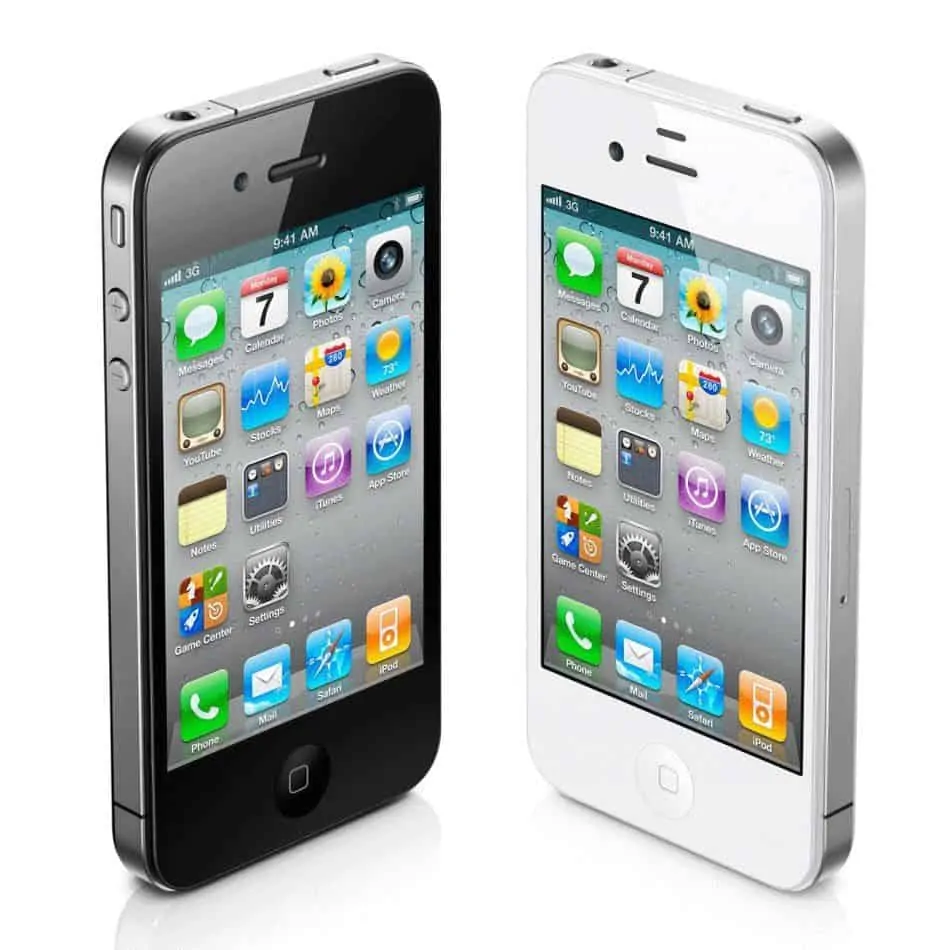
Inside, you had Apple's first system-on-a-chip with the A4 CPU, a heavily updated, new version of iOS (iOS 4), the inclusion of multi-tasking (for the first time), and the highest resolution display Apple had ever produced which the company dubbed "Retina Display". The iPhone 4 was a barn-storming success, securing 600,000 pre-orders within 24 hours of launching.
- Dimensions: 115.2 x 58.6 x 9.3 mm
- Screen Size: 3.5 inches, 640 x 960 pixels
- CPU: 1.0 GHz Cortex-A8
- Battery: 1420 mAh battery
iPhone 4s
The iPhone 4s looked the same as the iPhone 4 on the outside. Inside, however, was a different story; it shipped with Apple's latest A5 CPU, a new 8MP camera on the rear that supported 1080p video recording, and, of course, Apple's voice assistant, Siri.
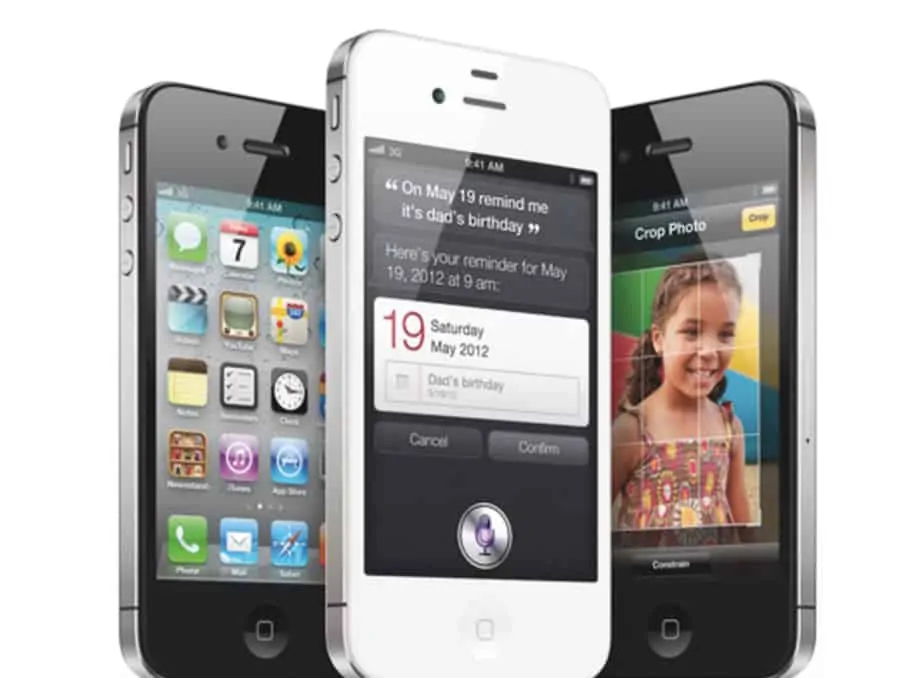
The iPhone 4s was received well by the press; reviewers liked Siri right of the bat, and Apple's new dual-core A5 processor had praise heaped on it. All in, the iPhone 4s, while rather incremental in the design department, made some rather significant steps forwards with specs, overall performance, and features. At the time, no one had even an inkling about voice assistants, let alone having one inside their iPhone.
- Dimensions: 115.2 x 58.6 x 9.3 mm
- Screen Size: 3.5 inches, 640 x 960 pixels
- CPU: Dual-core 1.0 GHz Cortex-A9
- Battery: 1432 mAh battery
iPhone 5
The iPhone 5 might have looked a lot like the iPhone 4s, but it did come with some pretty meaty updates. The most significant of which was that it was the first iPhone to support 4G LTE. On top of that, it also ran Apple's newly minted A6 processor which brought with it some rather significant performance improvements.
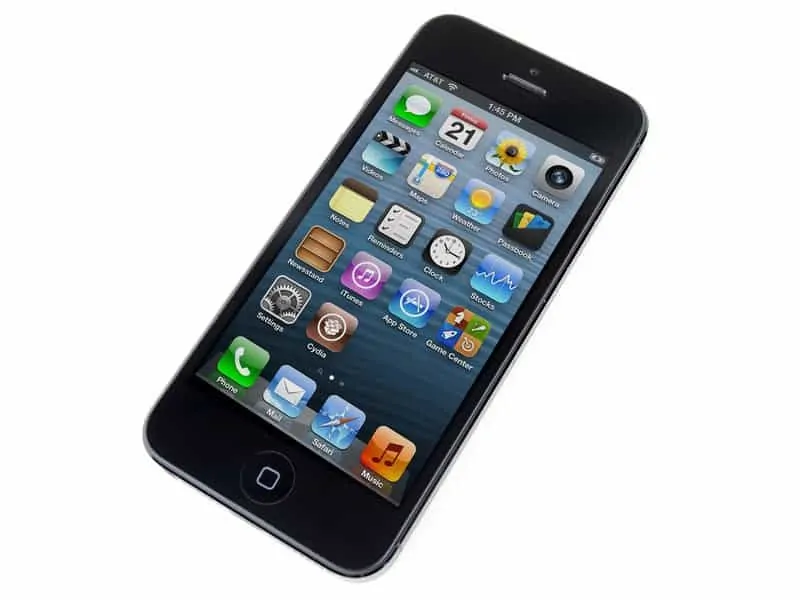
Visually, the iPhone 5 looked like the iPhone 4s. But there were physical differences; for starters, it had a completely different aspect ratio (16:9), making it slightly longer than the 4s. However, thanks to Apple's slick engineering, the iPhone 5 was thinner and lighter than the 4s. It also sold exceptionally well too; Apple clocked up 2 million pre-orders in the 24 hours after it was launched.
- Dimensions: 123.8 x 58.6 x 7.6 mm
- Screen Size: 4.0 inches, 640 x 1136 pixels
- CPU: Dual-core 1.3 GHz Swift (ARM v7-based)
- Battery: 1440 mAh battery
iPhone 5s
The iPhone 5s looked more or less identical to the iPhone 5 and iPhone 4s, but it was a significantly different beast. Inside you had Apple's new A7 CPU and this was accompanied by Apple's new M7 co-processor which handled things like step-counting. The biggest change, however, was to do with the home button; Apple replaced it with TouchID.
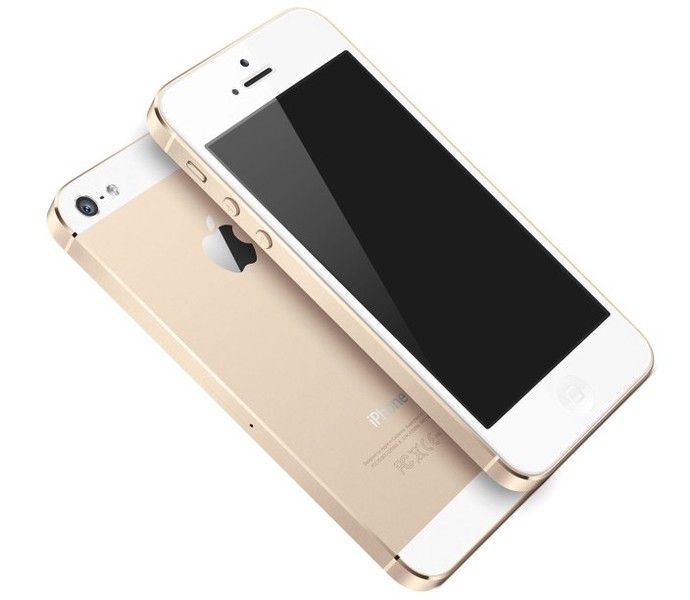
TouchID had a huge effect on the phone market. It also helped Apple rake in billions of dollars of revenue from Apple Pay. Altogether, the iPhone 5s looked kind of dull. But looking back, the iPhone 5s was actually one of Apple's most significant releases. It popularised fingerprint scanners, it was Apple's first iPhone with a half-way decent camera, and it sold by the boat-load – 9 million pre-orders in 24 hours is no joke!
- Dimensions: 123.8 x 58.6 x 7.6 mm
- Screen Size: 4.0 inches, 640 x 1136 pixels
- CPU: Dual-core 1.3 GHz Cyclone (ARM v8-based)
- Battery: 1560 mAh battery
iPhone 5c
The iPhone 5s was joined by the iPhone 5c at launch. It lacked TouchID which was reserved for the iPhone 5s. But it did come in a bunch of colors and, well, that was about it. The iPhone 5c was basically a colorful redux of the iPhone 5. It wasn't received particularly well by the press, but it did sell very well – you saw people using them everywhere.
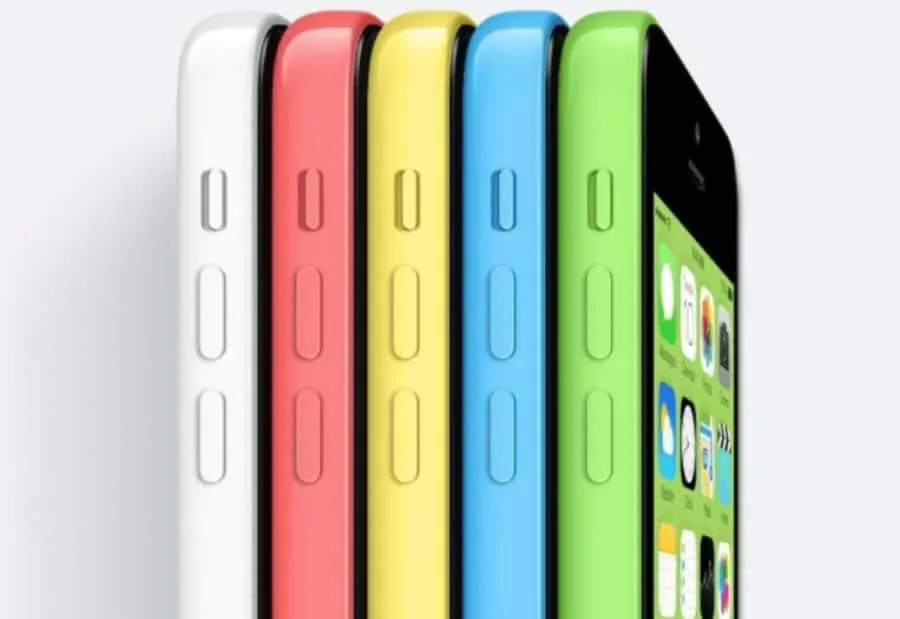
Why was the iPhone 5c so popular? Well, it wasn't because of the reviews; they were terrible. No, the reason the iPhone 5c was so popular was that it was A) cheap for an iPhone, and B) came in a load of colors, so it looked fairly novel. I had the green one, though I didn't hold on to it for too long, swapping it for the iPhone 5s after about 2 months of use.
- Dimensions: 124.4 x 59.2 x 9 mm
- Screen Size: 4.0 inches, 640 x 1136 pixels
- CPU: Dual-core 1.3 GHz Swift (ARM v7-based)
- Battery: 1510 mAh battery
iPhone 6 & iPhone 6 Plus
After YEARS of keeping much the same design, Apple dropped jaws with the release of the iPhone 6 and iPhone 6 Plus. Not only were they the biggest iPhones Apple had released to date, but there was no longer a 4in iPhone option. And this angered A LOT of people, though they would be placated soon enough with the release of the iPhone SE.
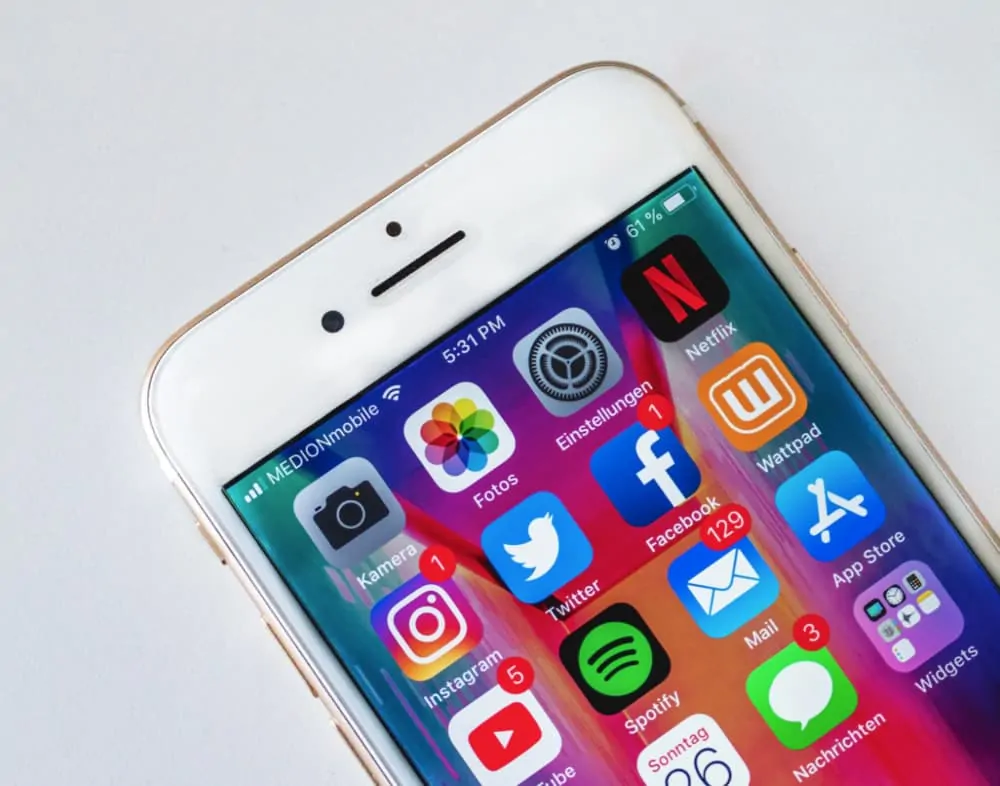
When did the iPhone 6 come out? Apple launched the iPhone 6 and iPhone 6 Plus on September 19, 2014. The iPhone 6 and iPhone 6 Plus were the eighth generation of the iPhone and they brought along some pretty big changes to how the iPhone worked.
The iPhone 6 and iPhone 6 Plus were significant because they were the first time Apple really updated its industrial design since the iPhone 4. The iPhone 6 Plus also had a 5.5in 1080p display, the biggest display ever fitted to an iPhone. People were shocked, scared, and bamboozled. Still, enough of them bought the handsets.
To date, Apple's iPhone 6 and iPhone 6 Plus remain one of the company's best selling models of all time. Guess people do like change after all, eh?
Specs: iPhone 6
- Dimensions: 138.1 x 67 x 6.9 mm
- Screen Size: 4.7 inches, 750 x 1334 pixels
- CPU: Apple A8 (20 nm)
- Battery: 1810 mAh battery
Specs: iPhone 6 Plus
- Dimensions: 158.1 x 77.8 x 7.1 mm
- Screen Size: 5.5 inches, 1080 x 1920 pixels
- CPU: Apple A8 (20 nm)
- Battery: 2915 mAh battery
iPhone SE
Remember when I said quite a few people were angry about the size of the iPhone 6 and iPhone 6 Plus? It got so bad that Apple did the most un-Apple thing it has ever done: it actually listened to its customers and released the iPhone SE to appease those that wanted a smaller, but equally potent iPhone.
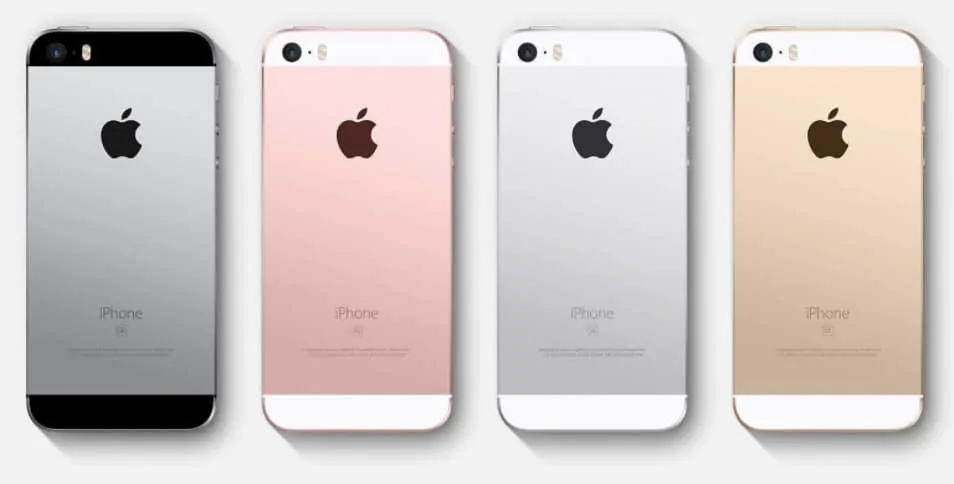
The iPhone SE went on to be very popular. I actually still have one; it still works great, although it does feel extremely small now. But the fact that it still works and is still getting iOS updates should tell you everything you need to know about why people love iPhones so much.
- Dimensions: 123.8 x 58.6 x 7.6 mm
- Screen Size: 4.0 inches, 640 x 1136 pixels
- CPU: Apple A9 (14 nm)
- Battery: 1624 mAh battery
iPhone 6s & 6s Plus
The iPhone 6s and iPhone 6s Plus were incremental updates, picking up where the iPhone 6 range left off. They looked the same as their predecessors, but they had some pretty significant updates inside them. The most notable addition was 3D Touch which enabled pressure-sensitive touch inputs, so, for instance, a user could "peak" inside an app to pick up a notification without having to actually open it.
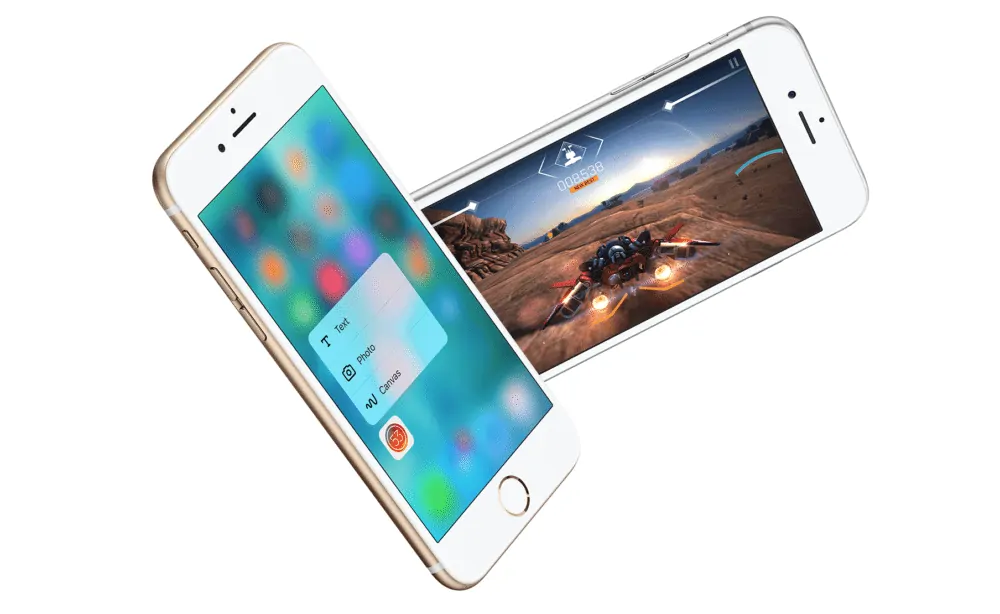
Specs: iPhone 6s
- Dimensions: 138.1 x 67 x 6.9 mm
- Screen Size: 4.7 inches, 750 x 1334 pixels
- CPU: Apple A9 (14 nm)
- Battery: 1715 mAh battery
Specs: iPhone 6s Plus
- Dimensions: 158.2 x 77.9 x 7.3 mm
- Screen Size: 5.5 inches, 1080 x 1920 pixels
- CPU: Apple A9 (14 nm)
- Battery: 2915 mAh battery
iPhone 7 & 7 Plus
The iPhone 7 was a controversial release for Apple. It was the first iPhone to ship without a headphone jack, and that move properly upset a lot of people. The iPhone 7 Plus was also the first iPhone to feature a dual-lens camera, complete with OIS and 2X Optical Zoom.
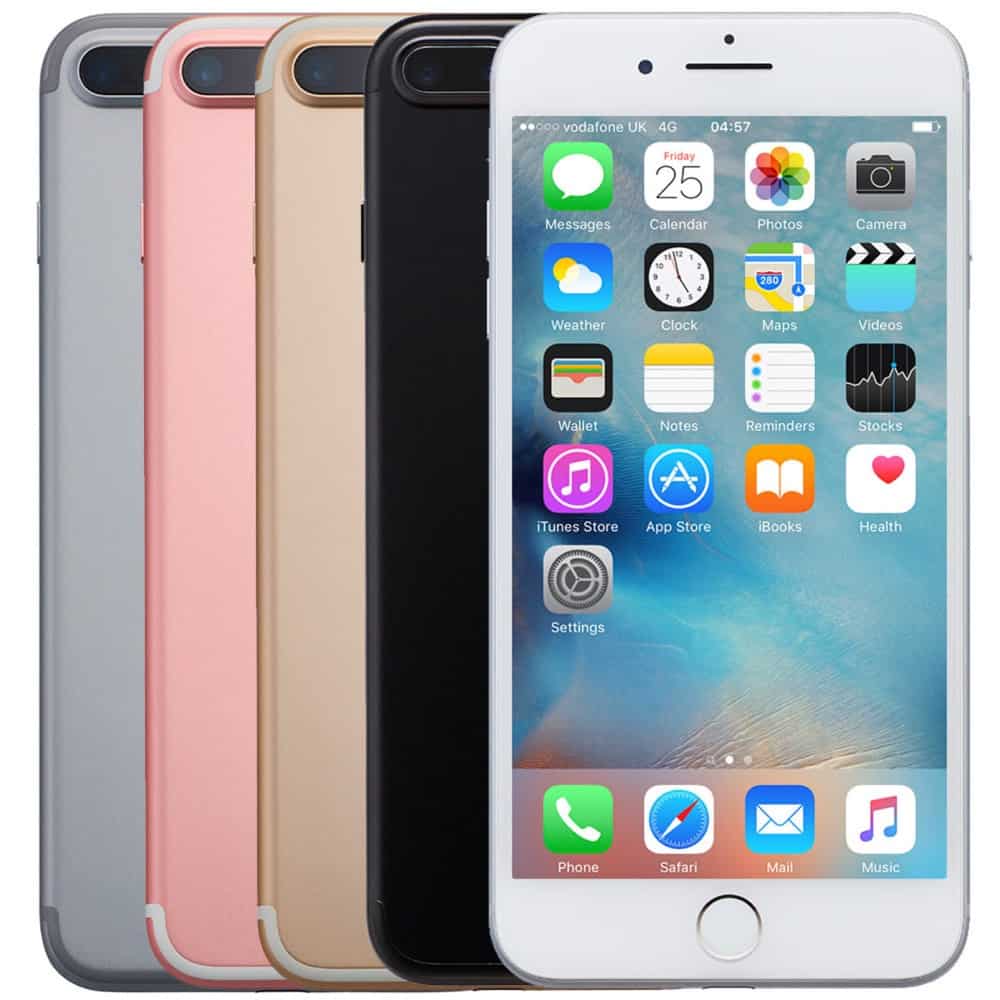
The iPhone 7 Plus got all the big updates, but the iPhone 7 still ran the same CPU, Apple's A10 Fusion, a quad-core CPU, and benefitted from OIS inside its single-lens 12MP camera. The iPhone 7 was the entry-level, smaller model. The iPhone 7 Plus became the defacto flagship, setting a trend that Apple would follow for years to come, save for the iPhone X (that phone launched all by itself).
Specs: iPhone 7
- Dimensions: 138.3 x 67.1 x 7.1 mm
- Screen Size: 4.7 inches, 750 x 1334 pixels
- CPU: Apple A10 Fusion
- Battery: 1960 mAh battery
Specs: iPhone 7 Plus
- Dimensions: 158.2 x 77.9 x 7.3 mm
- Screen Size: 5.5 inches, 1080 x 1920 pixels
- CPU: Apple A10 Fusion
- Battery: 2900 mAh battery
iPhone 8 & 8 Plus
The iPhone 8 and iPhone 8 Plus were, well… kind of boring releases. There's not really much to say about these phones, save for the fact that they had wireless charging, a slightly more powerful CPU, and improved displays, thanks to Apple's True Tone technology that allowed the phones to play HDR10 and Dolby Vision content despite not having an HDR-ready display.
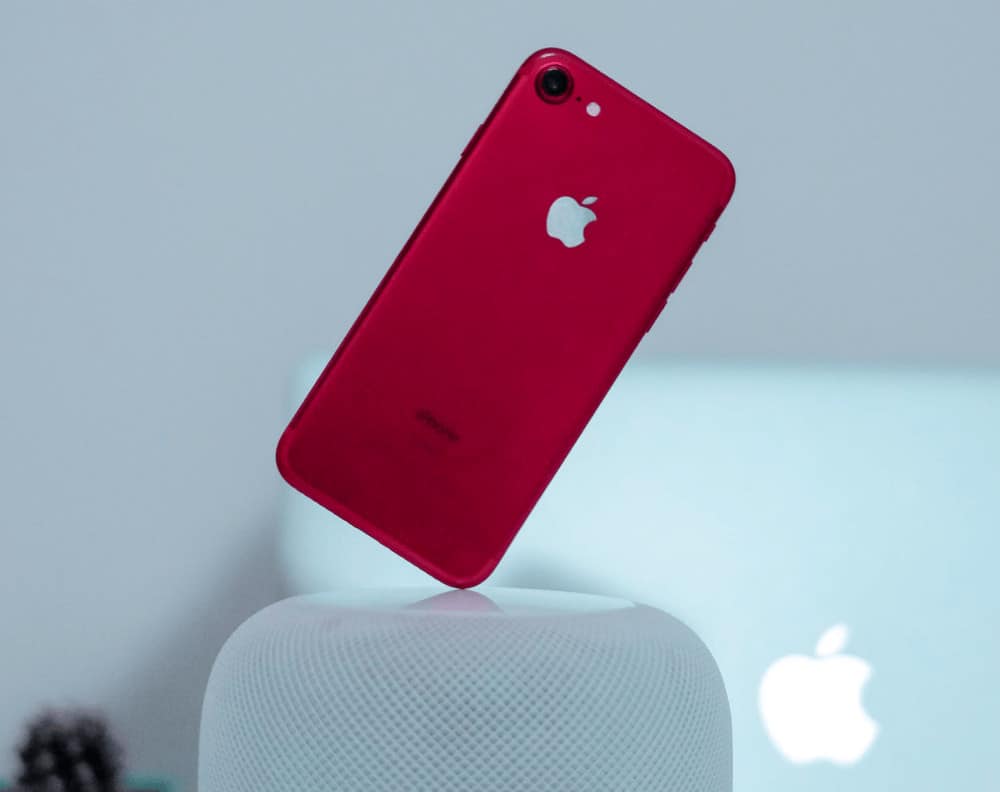
Apple also updated to the back panels; the iPhone 8 range used glass back panels. And that's it about for the iPhone 8. In the years following the release of the iPhone 8 and iPhone 8 Plus, the phones went on to actually become very popular. Apple kept both around until 2020; they were positioned as Apple's "cheap" iPhone and they sold very well as a result.
Specs: iPhone 8
- Dimensions: 138.4 x 67.3 x 7.3 mm
- Screen Size: 4.7 inches, 750 x 1334 pixels
- CPU: Apple A11 Bionic
- Battery: 1821 mAh battery
Specs: iPhone 8 Plus
- Dimensions: 158.4 x 67.3 x 7.5 mm
- Screen Size: 5.5 inches, 1080 x 1920 pixels
- CPU: Apple A11 Bionic
- Battery: 2691 mAh battery
iPhone X
The iPhone X represented 10 years of iPhone, and Apple had something big planned for the occasion. Prior to its launch, speculation was rife about the iPhone with plenty of leaks suggesting a radically different iPhone, unlike anything we'd seen before. The leaks were right. Apple's iPhone X was completely different – and not just in terms of how it looked.
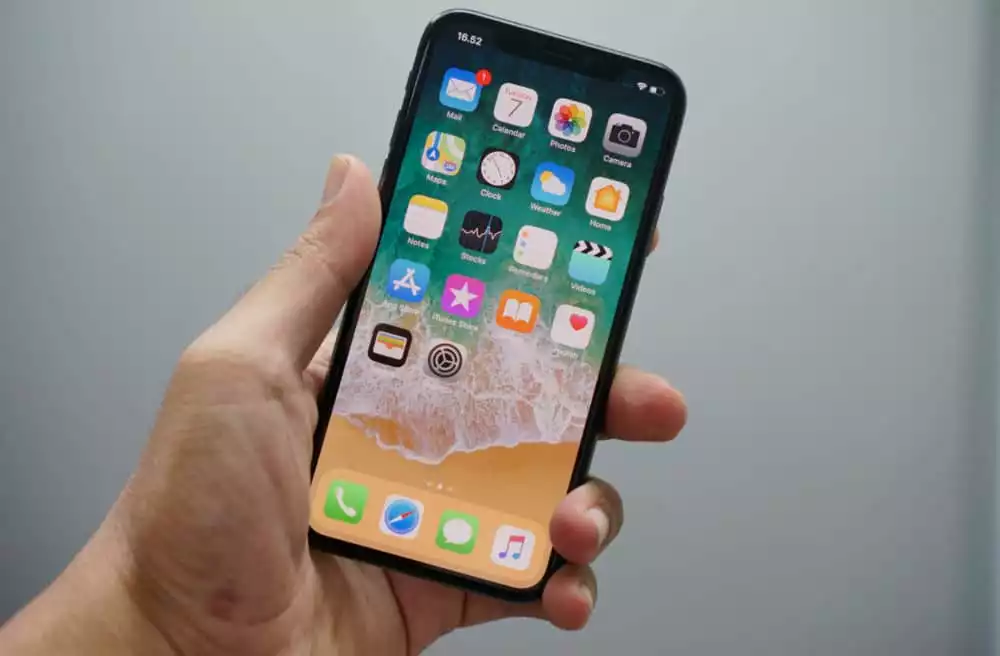
The iPhone X was the first iPhone to use OLED displays. It was the first iPhone to cost $999.99. And it was the first iPhone to launch without a Home button. Instead, it has FACE ID, a new facial-recognition technology that allowed users to unlock the phone simply by looking at it. Basically, the iPhone X was a pretty big update and it set in motion the course of Apple's iPhone design for the coming half-decade…
Specs: iPhone X
- Dimensions: 143.6 x 70.9 x 7.7 mm
- Screen Size: 5.8 inches, 1125 x 2436 pixels
- CPU: Apple A11 Bionic
- Battery: 2716 mAh battery
iPhone XR
The iPhone XR was exceptionally popular; it sold by the boat-load, thanks to Apple using its patented nice-color-options-marketing trick, its low(ish) price, and the fact that it performed brilliantly, thanks to Apple's massively powerful A12 Bionic CPU. The iPhone XR also had a massive display, 6.1in, but it did not have an OLED display like the iPhone X.
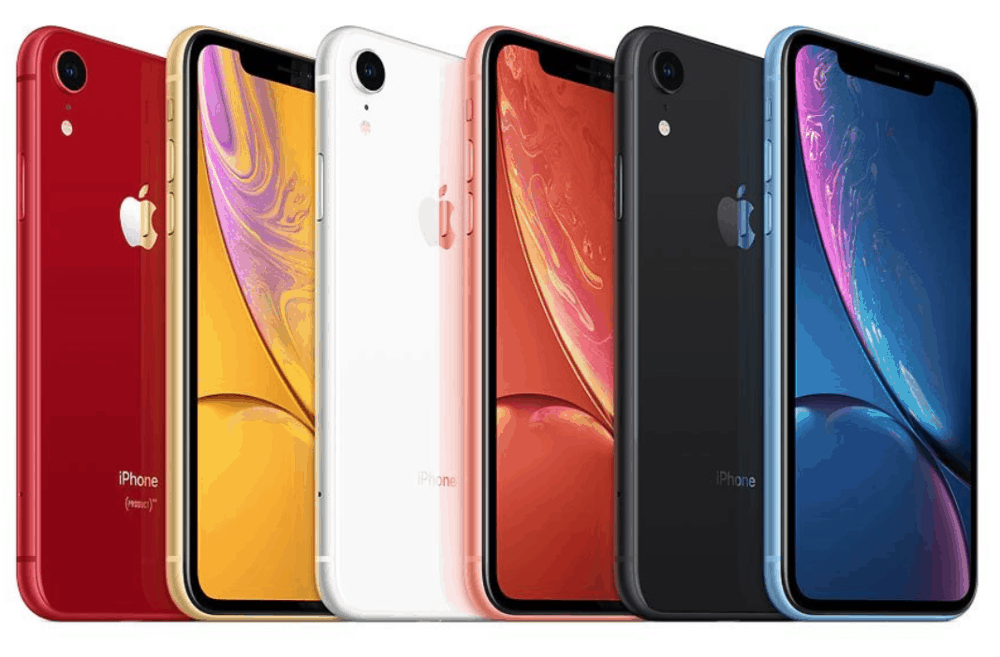
All told, the iPhone XR ended up being the most successful release inside Apple's iPhone X era, which included the iPhone X and the iPhone XS/XS Max. It was the company's best-selling phone in both 2018 and 2019. The XR still does pretty good business now, thanks to its low price on
Specs: iPhone XR
- Dimensions: 150.9 x 75.7 x 8.3 mm
- Screen Size: 6.0 inches, 1125 x 2436 pixels
- CPU: Apple A12 Bionic
- Battery: 2942 mAh battery
iPhone XS / XS Max
The iPhone XS and iPhone XS Max both feature OLED panels and Apple's A12 Bionic CPU. The iPhone XS Max was the defacto flagship, it had a larger display (6.4in vs the XS's 5.8in) and a larger battery, however, the phones internal components – including the camera – were identical on both models.
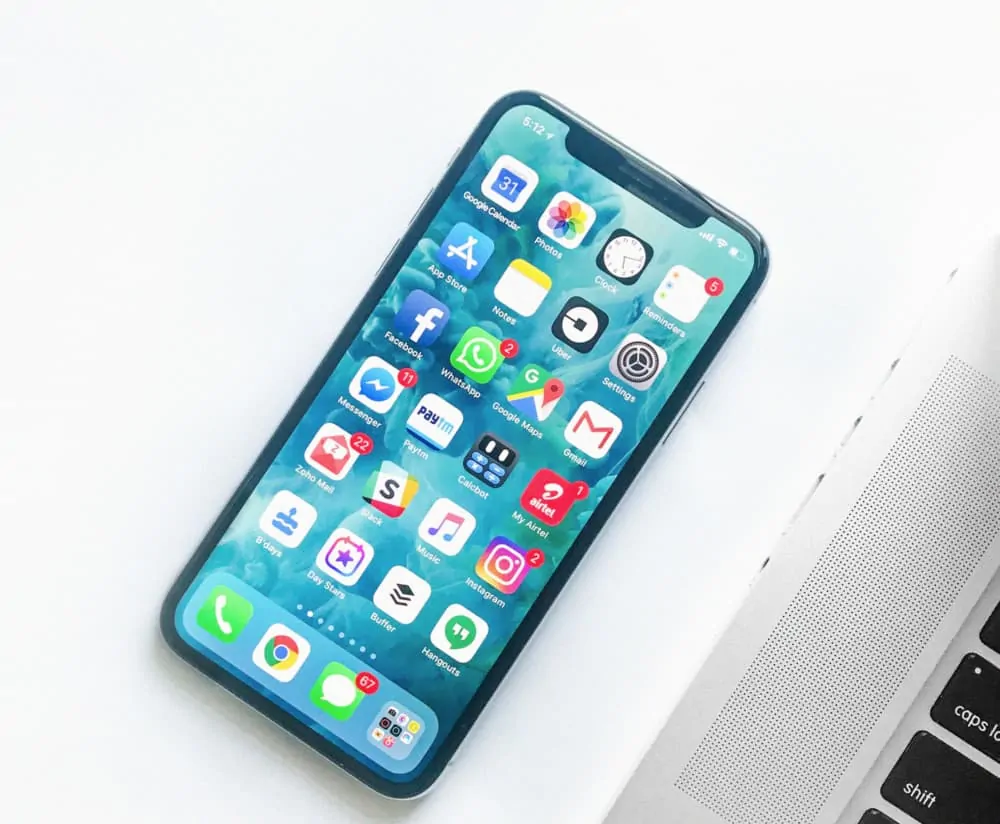
The iPhone XS prices started at $999 and topped out at $1300+ for the top-tier storage model, though you can now pick them up for less than $500. In terms of critical reception, the iPhone XS and iPhone XS Max were fairly well-received, getting solid reviews across the board, however, many reviewers lamented Apple's decision not to update the design language.
Remember: this design language has been in place since the release of the iPhone X. Keeping Apple's "era" model in mind, the X Era would not conclude until 2019 with the release of the iPhone 11 range, however, even these handsets closely resembled the XS and XS Max.
Specs: iPhone XS
- Dimensions: 143.6 x 70.9 x 7.7 mm
- Screen Size: 5.8 inches, 1125 x 2436 pixels
- CPU: Apple A12 Bionic
- Battery: 2658 mAh battery
Specs: iPhone XS Max
- Dimensions: 157.5 x 77.4 x 7.7 mm
- Screen Size: 6.4 inches, 1242 x 2688 pixels
- CPU: Apple A12 Bionic
- Battery: 3174 mAh battery
iPhone 11 / 11 Pro / 11 Pro Max
Apple's iPhone 11 range was significant because it effectively used the lessons Apple learned with its iPhone X range, specifically, you need a cheaper model, a smaller flagship model, and a large-displayed flagship, in order to properly address the needs of all consumers. The iPhone 11 range has proven very popular, helped no end by just how could the entry-level iPhone 11 was in practice – at $699.99, it's cheaper and still more powerful than both Samsung's Galaxy S10 and its newer Galaxy S20.
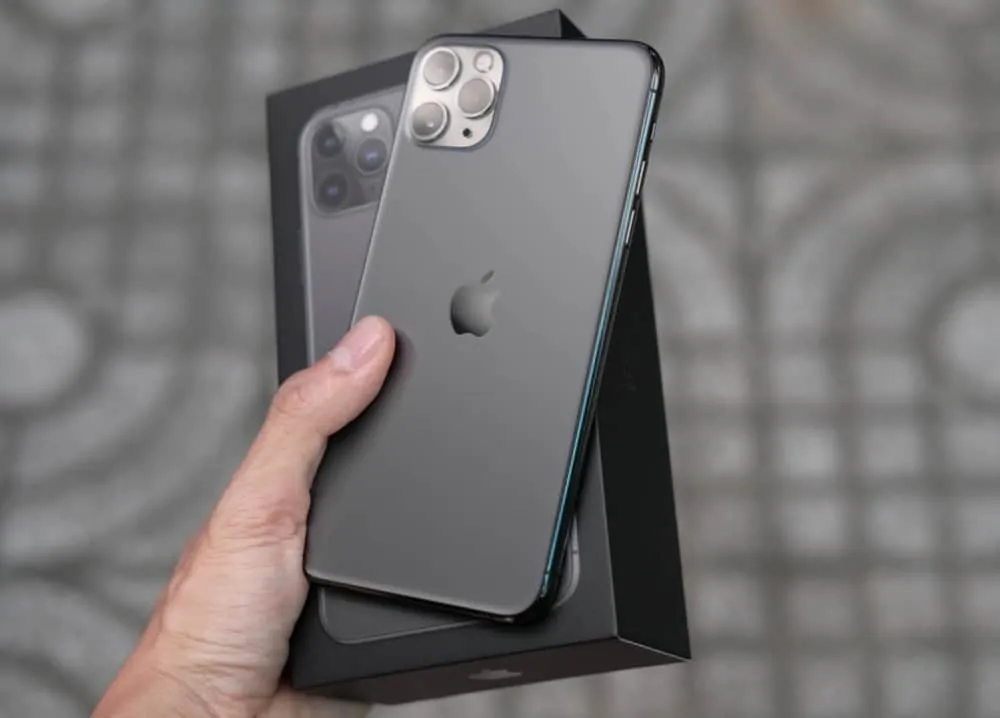
The iPhone 11 Pro and iPhone Pro Max were the first iPhones to feature triple-lens cameras, a move that was a long time coming. Apple really drilled down on the camera performance for the iPhone 11 range, and it worked – the iPhone 11 Pro camera is very, very impressive. The phones themselves looked similar to the iPhone XS range, with the iPhone 11 replacing the iPhone XR. Inside, the phones ran Apple's A13 chipset, a hugely powerful SoC that could run rings around most mid-range laptops.
Specs: iPhone 11
- Dimensions: 150.9 x 75.7 x 8.3 mm
- Screen Size: 6.1 inches, 828 x 1792 pixels
- CPU: Apple A13 Bionic
- Battery: 3110 mAh battery
Specs: iPhone 11 Pro
- Dimensions: 144 x 71.4 x 8.1 mm
- Screen Size: 5.8 inches, 1125 x 2436 pixels
- CPU: Apple A13 Bionic
- Battery: 3046 mAh battery
Specs: iPhone 11 Pro Max
- Dimensions: 158 x 77.8 x 8.1 mm
- Screen Size: 6.4 inches, 1242 x 2688 pixels
- CPU: Apple A13 Bionic
- Battery: 3969 mAh battery
iPhone SE (2020)
Apple kicked off 2020 with a bang, releasing the iPhone SE 2020 on April 24. Priced at $399.99 in the USA and £419 in the UK, the iPhone SE 2020 is the cheapest iPhone Apple has ever released. Essentially an iPhone 8 redux, the iPhone SE 2020 carries the same CPU as the iPhone 11 Pro Max – meaning the company's A13 Bionic chip. The SE 2020 has been shown to be faster than Samsung's Galaxy S20 Ultra as well – and that phone costs $1200 to buy.
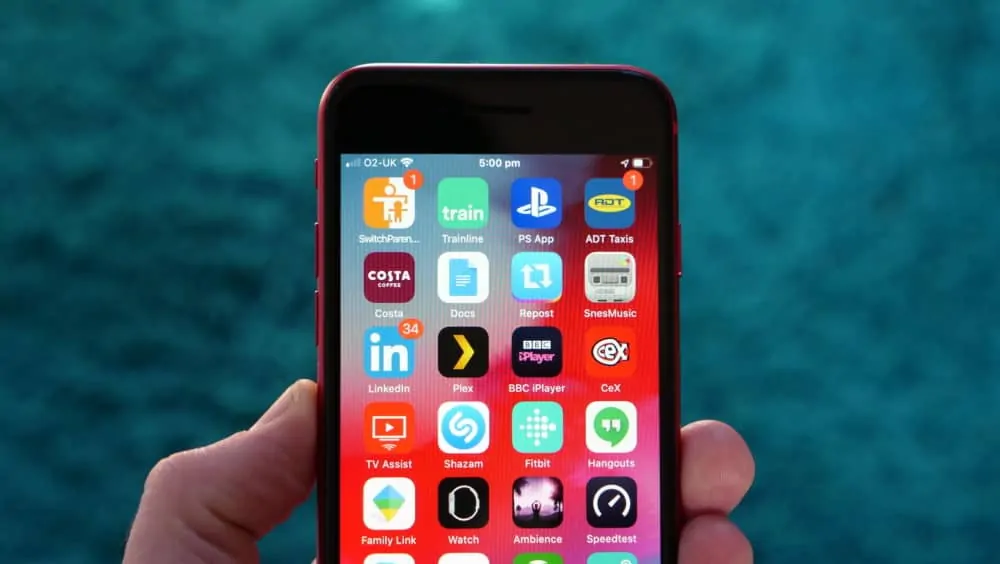
The iPhone SE 2020 was received well by reviewers; Damien – our reviewer – had a blast testing the iPhone SE 2020 out, claiming it was a powerhouse with respect to performance. Battery life isn't as good as we'd like on account of the phone's small size, but that's always going to be the case with smaller form factor phones. What's most interesting about the iPhone SE 2020, however, is the prospect of an iPhone SE Plus model that would replace the iPhone 8 Plus as Apple's cheaper but larger entry-level iPhone.
The iPhone 8 and iPhone 8 Plus still accounted for a fairly large chunk of Apple's iPhone sales in 2019, so it stands to reason that the company will want to replace both phones. We have an iPhone 8 replacement in the form of the iPhone SE 2020, so now we just have to wait for the iPhone SE Plus to land. Speaking personally, I'd be very interested in the iPhone SE Plus. The iPhone 8 Plus is still a great handset; the camera is solid and it has a massive battery. Add in the A13 chipset and you're looking at one hell of a combination!
Specs: iPhone SE (2020)
- Dimensions: 138.4 x 67.3 x 7.3 mm
- Screen Size: 4.7 inches, 750 x 1334 pixels
- CPU: Apple A13 Bionic
- Battery: 1821 mAh battery
iPhone 12 Mini
The iPhone 12 Mini is the smallest iPhone has made in years. Closer to the original iPhone SE in size than the current SE 2020 model, the iPhone 12 Mini is a fully-featured iPhone, packing in the same spec as the larger iPhone 12.
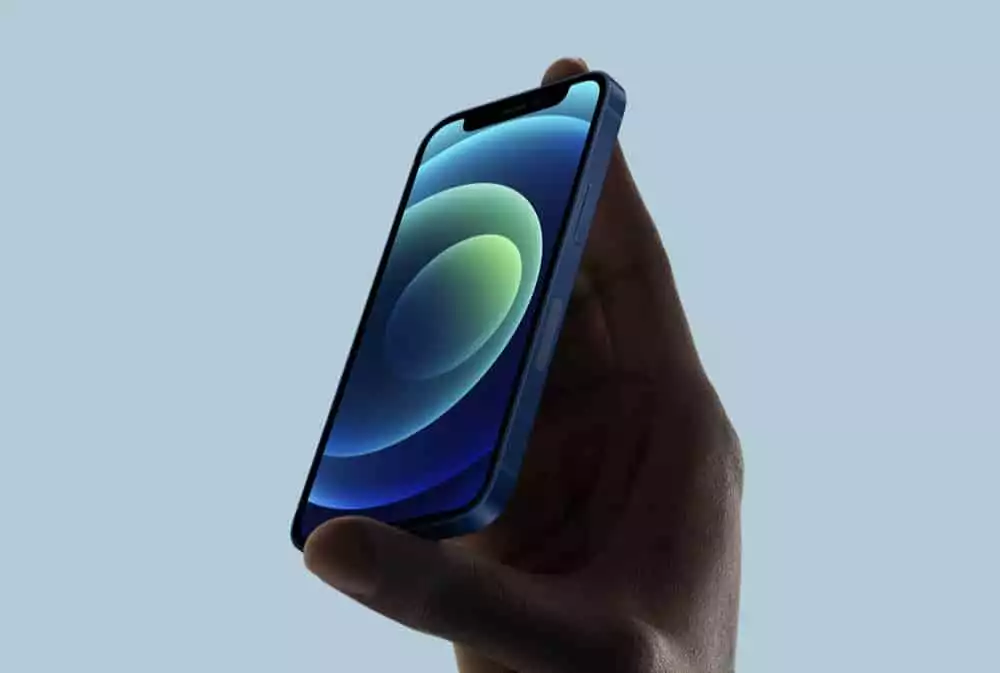
You have a 5.4in OLED display, 5G connectivity, Apple's A14 CPU, and the same amount as RAM and available storage as the iPhone 12. Basically, the iPhone 12 Mini is just a shrunken iPhone 12.
And this is really cool because, if you're after a small iPhone like a lot of people, you no longer have to make concessions with respect to hardware and specs. Like Google's Pixel phones, the large and small iPhone 12 are identical in all key areas, save for battery size and screen size.
Specs: iPhone 12 mini
- Dimensions: 131.5 x 64.2 x 7.4 mm
- Screen Size: 5.4 inches, 1080 x 2340 pixels
- CPU: Apple A14 Bionic
- Battery: 2227 mAh battery
iPhone 12
The iPhone 12 replaces the iPhone 11; it's the base model of the range, alongside the iPhone 12 Mini, although Apple has made some pretty significant changes here. It has an OLED display for starters. And 5G too.
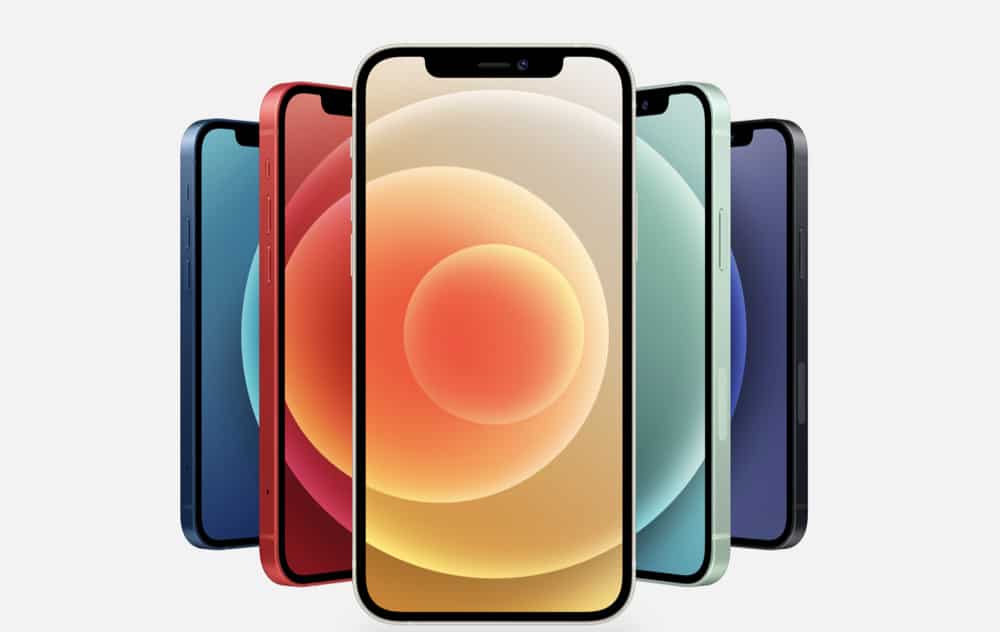
Design-wise, Apple has slightly tweaked the design of the phone inside its iPhone 12 range. They all now have a squared-off side profile, just like the iPhone 4 and iPhone 4s. This results, when combined with the iPhone X-era design, a tighter-looking package from front to back.
The iPhone 12 has a 6.1in display and runs Apple's A14 CPU. You have a dual-lens camera again, although this time Apple has tweaked the sensors for better low-light performance.
The iPhone 12 isn't a massive update over the iPhone 11, but if you're running an iPhone X or older, the jump to the iPhone 12 will feel like a massive upgrade – it's significantly faster, it has a better display, it runs 5G, and it has a new, smarter-looking design.
Specs: iPhone 12
- Dimensions: 146.7 x 71.5 x 7.4 mm
- Screen Size: 6.1 inches, 1170 x 2532 pixels
- CPU: Apple A14 Bionic
- Battery: 2815 mAh battery
iPhone 12 Pro
The iPhone 12 Pro has grown in size this year. The iPhone 11 Pro had a 5.8in OLED display. This time, Apple's packed the iPhone 12 Pro with a 6.1in OLED panel. It also has the second-best camera in the iPhone 12 lineup, with its triple-lens rear-mounted camera unit.
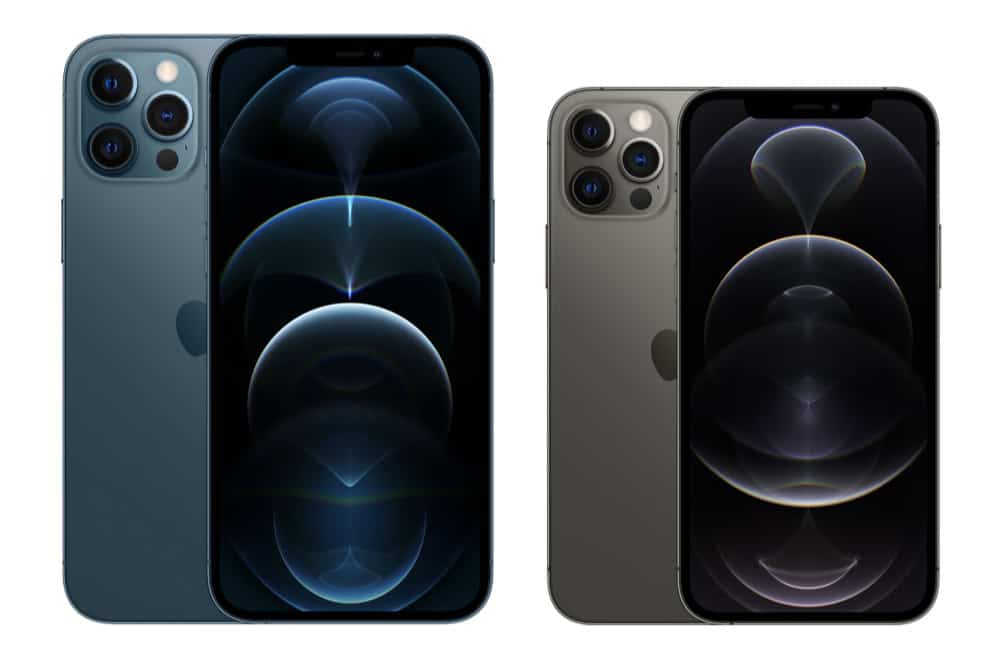
The PRO moniker means that this phone is part of Apple's two-tier flagship offering for 2020. You get the best spec possible inside and a more advanced camera unit than the iPhone 12 and iPhone 12 Mini. The camera tech is where the iPhone 12 and iPhone 12 Pro differ the most, so if camera tech is important to you, you'll want to go with one of the iPhone 12 Pro models.
The iPhone 12 Pro is slightly less impressive in the camera department than the iPhone 12 Pro Max. But for most users, the difference will be negligible. If you go with either of the Pro models, you'll get truly awesome camera performance – still images and video.
Although for the best of the best, you'll need to turn to the iPhone 12 Pro Max.
Specs: iPhone 12 Pro
- Dimensions: 146.7 x 71.5 x 7.4 mm
- Screen Size: 6.1 inches, 1170 x 2532 pixels
- CPU: Apple A14 Bionic
- Battery: 2815 mAh battery
iPhone 12 Pro Max
The iPhone 12 Pro Max is the biggest iPhone Apple has released to date, with its 6.7in OLED display. Inside, the internal spec is much the same as the iPhone 12 Pro – it has the same CPU, the same storage options, and the same amount of RAM.
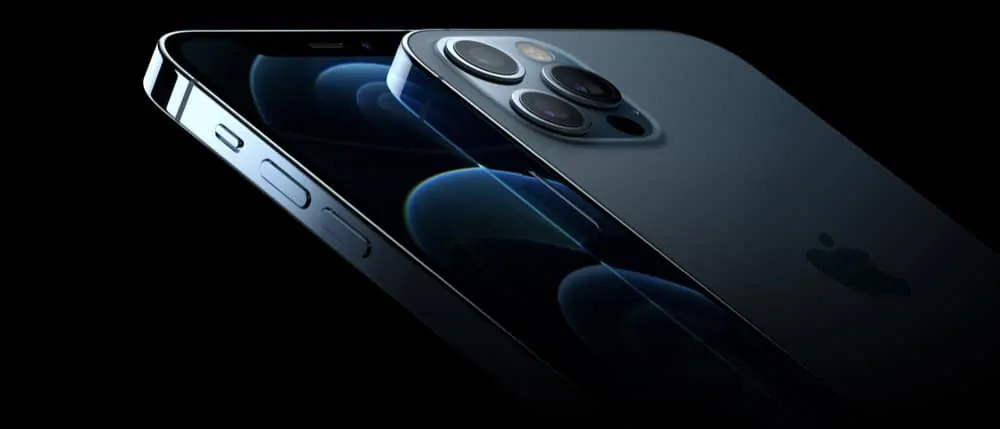
With the camera unit, things start to get a little more impressive on the iPhone 12 Pro Max. And this is really what you're paying for here: the largest possible OLED display and the best iPhone camera to date, complete with Apple's ToF LiDAR sensor.
Thanks to its longer 65mm-equivalent focal length lens, the iPhone 12 Pro Max has a longer optical zoom than the Pro model and 12x the digital zoom capabilities. Add in things like LiDAR and you're looking at the most accomplished iPhone camera to date.
Until 2021, when we'll see the iPhone 13 start to take shape.
Specs: iPhone 12 Pro Max
- Dimensions: 160.8 x 78.1 x 7.4 mm
- Screen Size: 6.7 inches, 1284 x 2778 pixels
- CPU: Apple A14 Bionic
- Battery: 3687 mAh battery
iPhone 13

With the iPhone 13, Apple improved the battery life on ALL models, bringing performance back in line with what you got on the iPhone 11. You still have 5G but thanks to the use of larger battery cells inside the phones, you no longer have any issues with battery life when running 5G.
Here's a quick breakdown of all the changes Apple introduced on all of its iPhone 13 models:
iPhone 13 Updates List
- iPhone 13 gets trickle-down updates from iPhone 12 Pro; it now runs the same 12-megapixel lens with an f/1.6 aperture as 2020's iPhone 12 Pro. The iPhone 13's new ultrawide camera also has a faster f/2.4 lens and 120-degree field of view, as well as sensor-shift stabilization technology.
- All iPhone 13 models feature Cinematic Mode; this technology will automatically transition focus in real-time which will make all the phones in the range better for shooting video. Apple used a parody of Knives Out to demonstrate how Cinematic Mode works.
- The iPhone 13 range features a smaller notch. The notch on the iPhone 13 is 20% smaller than it was before.
- iPhone 13 has better 5G performance than the iPhone 12. The iPhone 13's connection to 5G networks is faster, according to Apple, and it will support more than 200 carriers in over 60 countries by the end of 2021.
- The iPhone 13 features Apple's new A15 CPU. Apple says the new A15 chipset, while still a 5nm SoC, is 50% faster than its nearest competitor (the Snapdragon 888), although these claims have not been tested yet.
- The A15 chipset features two new high-performance cores and four new high-efficiency cores.
iPhone 13 Pro and iPhone Pro Max Updates List
- All of Apple's iPhone 13 Pro models feature new 120Hz Super Retina XDR screens with improved brightness (up to 1000nits).
- The iPhone 13 Pro and Pro Max are available in the following colors: graphite, gold, silver, and a new light blue.
- All three cameras have been updated inside the iPhone 13 Pro lineup; you have better low light performance, thanks to larger sensors, a wider aperture for the ultra-wide lens, and 3x zoom for the telephoto lens. Night Mode is now supported on all three lenses too.
- The 13 Pro and 13 Pro Max now feature a new macro lens that'll let you shoot objects from just 2cm away. All of Apple's Pro models now feature sensor-shift optical image stabilization.
- The Pro models also get Cinematic mode but will also benefit from Apple's new ProRes technology. You can film in 4K up to 30fps with the iPhone 13 Pro models and, with ProRes, a higher quality video format, you can then edit in more detail after footage has been filmed.
- All iPhone 13 Pro models get an extra tier of storage, 1TB – this is likely down to its use of ProRes.
- Apple has improved the iPhone 13 Pro and 13 Pro's battery life; the iPhone 13 Pro will last 1.5 hours longer than the iPhone 12 Pro, and the iPhone 13 Pro Max will last 2.5 hours longer than the iPhone 12 Pro Max.
Looking To Save Big on Your Next iPhone? Check Out Our Guide On Buying Refurbished iPhones – You Could Save Up To 50%!
Frequently Asked Questions
-
Q: When Did The First iPhone Come Out?
The first iPhone got its release on June 29, 2007. This iPhone, the very first of its kind, used 2G connectivity and shipped with a paltry amount of memory and storage. Compared to iPhones launched just a few years later, it was no more than a shiny calculator with respect to performance and features.
-
Q: What is The Best iPhone To Buy?
The best iPhone to buy is usually the newest. And right now, the latest iPhone is the iPhone 12 range of phones which include the iPhone 12, iPhone 12 Mini, iPhone 12 Pro, and iPhone 12 Pro Max. If you want the best camera and battery life, and the largest display, go with the iPhone 12 Pro Max. Want value for money, go with the iPhone 12 or iPhone 12 Mini.
-
Q: Which is The Cheapest iPhone To Buy?
-
Q: How Much is The New iPhone a Month?
Prices per month for Apple's new iPhone 12 range start from £20 a month and go up to £70-£80 per month for the company's current flagship model, the iPhone 12 Pro Max. Obviously, if you want more data and a shorter contract, this will inflate the monthly price. Longer contracts with less data are cheaper per month.
-
Q: When Did The iPhone 6 Come Out?
The iPhone 6 and iPhone 6 Plus were Apple's eighth generation of iPhones and were first released on September 19, 2014. The iPhone 6 and iPhone 6 Plus were the first iPhones to break the "small" iPhone screen paradigm – the iPhone 6 used a 4.7in display and the iPhone 6 Plus used an (at the time) massive 5.5in screen.
-
Q: When Did The iPhone 5 Come Out?
The iPhone 5 was announced on September 23, 2013. It was the sixth iPhone released by Apple at this point. The iPhone 5 was 18% thinner, 20% lighter, and had 12% less overall volume than its predecessor, the iPhone 4s.

Richard Goodwin has been working as a tech journalist for over 10 years. He is the editor and owner of KnowYourMobile.
How Many Different Types of Iphones Have There Been Invented
Source: https://www.knowyourmobile.com/phones/every-single-iphone-released-to-date-a-complete-list-updated/

0 Response to "How Many Different Types of Iphones Have There Been Invented"
Post a Comment